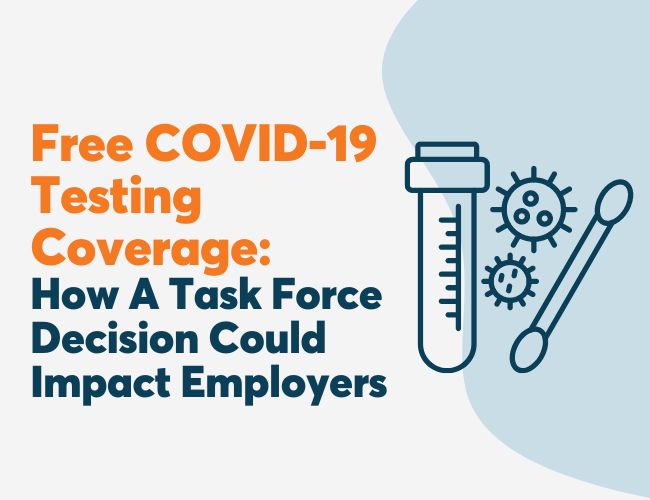The second half of 2014 ended with a number of complaints filed by the Equal Employment Opportunity Commission (EEOC) against wellness programs, including the EEOC’s first direct challenge under Title I of the Americans with Disabilities Act (ADA) against Orion Energy Systems and a challenge against Honeywell under both the ADA and Genetic Information Nondiscrimination Act (GINA). These lawsuits make it imperative that wellness professionals fully understand the regulatory landscapes that govern the legality of their programs.
Below is a high-level overview of some of the laws. A deeper review is necessary before applying them to any wellness program.
The Americans With Disabilities Act (ADA) And Americans With Disabilities Act Amendments Act (ADAAA)
The ADA/ADAAA prohibits employers from requiring a medical examination and making inquiries of an employee as to whether he or she has a disability or to the nature/severity of a disability unless such examination or inquiry is shown to be job-related and consistent with business necessity. However, there is a statutory safe harbor that exempts certain insurance plans from the ADA’s general prohibitions.
The “benefit plan exception” states that the ADA shall not be construed as prohibiting an employer from establishing, sponsoring, observing, or administering the terms of a bona fide benefit plan that are based on underwriting risks, classifying risks, or administering such risks that are based on, or not inconsistent with, state law or where the plan is not subject to state law (a self-funded benefit plan) so long as the exemption is not used as a subterfuge for discrimination. As such, voluntary medical examinations and/or histories, which are part of a group wellness program, are permissible so long as strict confidential processes are followed.
What Is “Voluntary”?
There is no short definition of “voluntary,” but the abbreviated answer is that a wellness program may be voluntary if the employer neither requires participation nor penalizes employees who do not participate. The EEOC once posited that a health reimbursement arrangement (HRA) administered as part of a wellness program that meets the incentive limitations of the Health Insurance Portability and Accountability Act of 1996 (HIPAA) wellness regulations would be deemed voluntary and would not violate the ADA. This portion of the opinion letter was withdrawn because it was outside the scope of the request.
The position currently held by the EEOC is that an incentive is a veiled penalty, which, in essence, makes the program involuntary and, thus, violates the ADA. However, this is in conflict with the “benefit plan exception,” noted above.
In plain language: These are laws that say employers can’t make their employees take medical exams or ask them questions about their disabilities unless it’s for a job. But there are some laws that say it’s okay for companies to have wellness programs, as long as the employees can choose not to participate without getting in trouble (i.e., the program is voluntary).
Genetic Information Nondiscrimination Act (GINA)
Under GINA, it is unlawful for an employer to request, require, or purchase genetic information with respect to an employee or an employee’s family member. There is an exception if the information is part of a wellness program, subject to strict adherence to the following three requirements:
- The employee provides prior, knowing, voluntary, and written authorization.
- Only the employee or family member and the licensed health care professional, or board-certified genetic counselor involved in providing such services, receive individually identifiable information concerning the results of such services.
- Any individually identifiable genetic information provided in connection with the services is only available for purposes of such services and shall not be disclosed to the employer except in aggregate terms that do not disclose the identity of specific employees.
So what does it mean to be voluntary under GINA? The EEOC concluded that it would not violate Title II for an employer to offer individuals an inducement for completing an HRA that includes questions about family medical history, or other genetic information, as long as the employer specifically identifies those questions and makes clear, in language reasonably likely to be understood by those completing the HRA, that the individual need not answer the questions that request genetic information in order to receive the inducement.
The EEOC added that adherence to Title II of GINA does not guarantee adherence to Title I of GINA, ADA, or HIPAA.
In plain language: Wellness programs also can’t ask for genetic information from employees or their families unless the employee agrees first, and only certain people involved in providing the services can see the information.
Health Insurance Portability And Accountability Act (HIPAA) & Patient Protection And Affordable Care Act (PPACA)
The general rule pursuant to HIPAA nondiscrimination provisions is that a health plan is prohibited from charging similarly situated individuals different premiums on the basis of a “health factor.” However, there is an exception to the general rule if the reward (i.e., premium discount) is based on participation in a program reasonably designed to promote health or prevent disease (i.e., a wellness program).
When analyzing a wellness program under HIPAA and PPACA, the first step is to determine whether the wellness program is “participatory” or “health-contingent.” Participatory wellness programs are not required to follow HIPAA nondiscrimination provisions, discussed below. However, participatory (and health-contingent) wellness programs should be reviewed and scrutinized against the provisions of GINA, ADA, the Employee Retirement Income Security Act (ERISA), the Internal Revenue Code (IRC), and other federal and state laws.
Participatory Wellness Programs
Participatory wellness programs are defined under HIPAA nondiscrimination final regulations as programs that either do not provide a reward or do not include any conditions for obtaining a reward that is based on an individual satisfying a standard that is related to a health factor. Examples include a program that reimburses employees for a gym membership, a diagnostic testing program that provides a reward for participation and does not base any part of the reward on outcomes, and a program that provides a reward to employees for attending a monthly, no-cost health education seminar.
If the wellness program is participatory, it does not have to follow HIPAA nondiscrimination regulations. However, if part or all of a wellness program is health-contingent, the program must be analyzed pursuant to HIPAA nondiscrimination regulations.
Health-Contingent Wellness Programs
Health-contingent wellness programs require an individual to satisfy a standard related to a health factor to obtain a reward or require an individual to undertake more than a similarly situated individual based on a health factor in order to obtain the same reward. The standard may be performing or completing an activity relating to a health factor, or it may be attaining or maintaining a specific health outcome. The final regulations further subdivided health-contingent programs into (i) activity-only wellness programs and (ii) outcome-based wellness programs.
While there are some differences, both types are permissible only if the program adheres to the five conditions:
- Be reasonably designed to promote health or prevent disease (the same rules apply to activity-only and outcome-based programs).
- Give employees a chance to qualify for the incentive at least once a year (the same rules apply to activity-only and outcome-based programs).
- Cap the reward or penalty at 50% of the total cost of coverage for avoiding tobacco and at 30% for all other types of wellness incentives (the same rules apply to activity-only and outcome-based programs).
- Provide an alternative way to qualify for the incentive for those who have medical conditions (different rules apply to activity-only and outcome-based programs).
- Describe the availability of the alternative method of qualifying for the incentive in written program materials (the same rules apply to activity-only and outcome-based programs).
These rules set forth criteria for an affirmative defense that can be used by plans and issuers in response to a claim that the plan or issuer discriminated under HIPAA nondiscrimination provisions.
In plain language: If a wellness program is “participatory,” it doesn’t have to follow the “HIPAA nondiscrimination provision,” but if part or all of the wellness program is “health-contingent,” the wellness program has to follow them. Health-contingent wellness programs are further divided into two types of wellness programs: “activity-only wellness programs” and “outcome-based wellness programs.” These wellness programs can be designed to promote health or prevent disease, but they still have to follow five conditions (stated above). Following these rules is important because it helps employers defend themselves against claims that their wellness program discriminates against someone based on their health.
Employee Retirement Income Security Act (ERISA)
The Employee Retirement Income Security Act (ERISA) establishes minimum standards for employee benefits plans sponsored by private-sector employers. However, ERISA does not apply to two types of employers—governmental and church employers.
If a wellness program provides medical care (in the following list of services), it will be considered a group health plan subject to ERISA:
- Counseling services
- Biometric screenings
- Physical examinations
- Flu shots/immunizations
If the program is covered under ERISA, it needs to:
- Adopt an official plan document that describes the plan’s terms and operations
- Explain the plan’s terms and rules to participants through an SPD
- File an annual report (Form 5500) for the plan, unless a filing exemption applies
- Comply with certain fiduciary standards of conduct with respect to the plan;
- Establish a claims and appeals process for participants to receive benefits from the plan
Conclusion
Wellness program regulations are always evolving and changing. Employers should review their wellness programs against these new regulations to make sure they comply with federal law. Failure to do so can lead to hefty fines and penalties. By following wellness program regulations, employers can ensure their wellness programs provide a safe and fair environment for employees.
This article is intended to provide an overview of wellness program regulations under current HIPAA nondiscrimination rules. It is not intended as legal advice or an exhaustive review of all applicable laws or regulations. Employers should consult with their legal counsel to obtain specific guidance regarding wellness programs and related compliance requirements.












